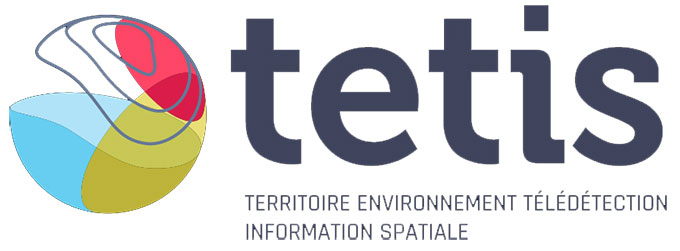
Weakly Supervised Learning for Land Cover Mapping of Satellite Image Time Series via Attention-Based CNN TASSEL_orig

- Objective of the article : Link to article
The use of time series of high-resolution satellite images opens up new opportunities for monitoring the earth's surface, but also poses challenges in terms of analysing massive amounts of data. One of these challenges concerns land cover mapping, where the information available is often limited and of approximate quality. To address this challenge, the authors propose TASSEL, a new deep learning framework that exploits detailed information from satellite images to improve land mapping. Their experiments show that TASSEL not only improves predictive performance compared with competing approaches, but also provides additional information for interpreting model decisions.
Explore the capabilities of the model in action!
👉Check out our interactive map to gain insights on how the model performs. Visit OUR MAP👈
Overview
This project is organized into several key files and directories:
The preprocessing code resides in the 'preprocessing' branch. You can explore it by visiting this link.
The preprocessing is done in the numbered notebooks, following the numerical order :
1_data_analyze.ipynbanalyze the input data.2_extract_included_segments.ipynbextract segments partially (0%->100%) included in polygons for training set.2_extract_segments.ipynbextract all segments and their pixels for inference set.3_segment_analyze.ipynbanalyze the segment extraction results.4_normalization.ipynbnormalize the acquisition data.5_730_conversion.ipynbconvert pixel coordinates for each segment (obtained with2_extract_segments.ipynb) to their 730 values vector (73 acquisitions for 10 bands --> 730 values).
The requiered packages are listed in the requirements.txt file.
The preprocessing can also be done with the process_data.py file, hence can be launched with a command line.
-
main_inference.ipynbandmain_train.ipynb: These Jupyter notebooks contain the main code for training and inference. -
model_components/: This directory contains the source code for the model components. It includes:-
Attention_Layer.py: Implements an attention layer for a neural network. -
CNN_model.py: Implements a Convolutional Neural Network (CNN) model. -
classification.py: Implements a classification model. -
k_means.py: Implements a k-means clustering algorithm. -
test_K_m.py: Contains tests for the k-means clustering algorithm.
-
-
index.html: This file contains the html code for the map. The map is displayed using GitHub Pages. GitHub Pages is a static site hosting service that takes HTML, CSS, and JavaScript files straight from a repository on GitHub, optionally runs the files through a build process, and publishes a website. -
js/: This directory contains the javascript code for the map.script.js
-
static/: This directory contains the css code for the map.styles.css
-
sources/: This directory contains the source code for the map. It includes:input_file.json: Contain all the data (pixels, class_id and alpha) for the map.up_left_corner_segment_lat_long.json: Contains the data (pixels, class_id and alpha) for the up left corner map.water_segment_lat_long.json: Contains the data (pixels, class_id and alpha) for the water map.training_segment_lat_long.json: Contains the data (pixels, class_id and alpha) for the training map.
Python 3.10.13 was used for this project.
- Clone the repo
git clone https://github.com/ExplAInability-TASSEL/ExplAInability-P5A.git
- Install the required packages
pip install -r requirements.txt
- Run the notebooks to train and test the model
- Run the map
- If you want to use the map with your own data, you can use the
index.htmlandsegment_lat_long.jsonfile as a template.
Model preformance on Test(new) data:
| Class | Precision | Recall | F1-Score | Support |
|---|---|---|---|---|
| 0 - Cereals | 1.00 | 0.86 | 0.93 | 109 |
| 1 - Cotton | 1.00 | 0.94 | 0.97 | 82 |
| 2 - Oleag./Legum. | 1.00 | 0.94 | 0.97 | 85 |
| 3 - Grassland | 0.92 | 0.97 | 0.94 | 159 |
| 4 - Shrubland | 0.89 | 1.00 | 0.94 | 281 |
| 5 - Forest | 1.00 | 0.92 | 0.96 | 218 |
| 6 - Baresoil | 1.00 | 1.00 | 1.00 | 11 |
| 7 - Water | 1.00 | 1.00 | 1.00 | 14 |
- Accuracy: 0.95
- Macro Avg Precision: 0.98
- Macro Avg Recall: 0.95
- Macro Avg F1-Score: 0.96
- Weighted Avg Precision: 0.96
- Weighted Avg Recall: 0.95
- Weighted Avg F1-Score: 0.95
- Total Instances: 959
- GAUBIL Clara (@claragbl)
- GILLARD Thibault (@Thibault-GILLARD)
- COURBI Antoine (@TonioElPuebloSchool)
- RAGEOT Pierre (@pierrert3)
Publication authors:
- RAFFAELE GAETANO
- DINO IENCO
- YAWOGAN JEAN EUDES GBODJO
- ROBERTO INTERDONATO
Distributed under the 'GNU GENERAL PUBLIC LICENSE' License. See LICENSE for more information.

